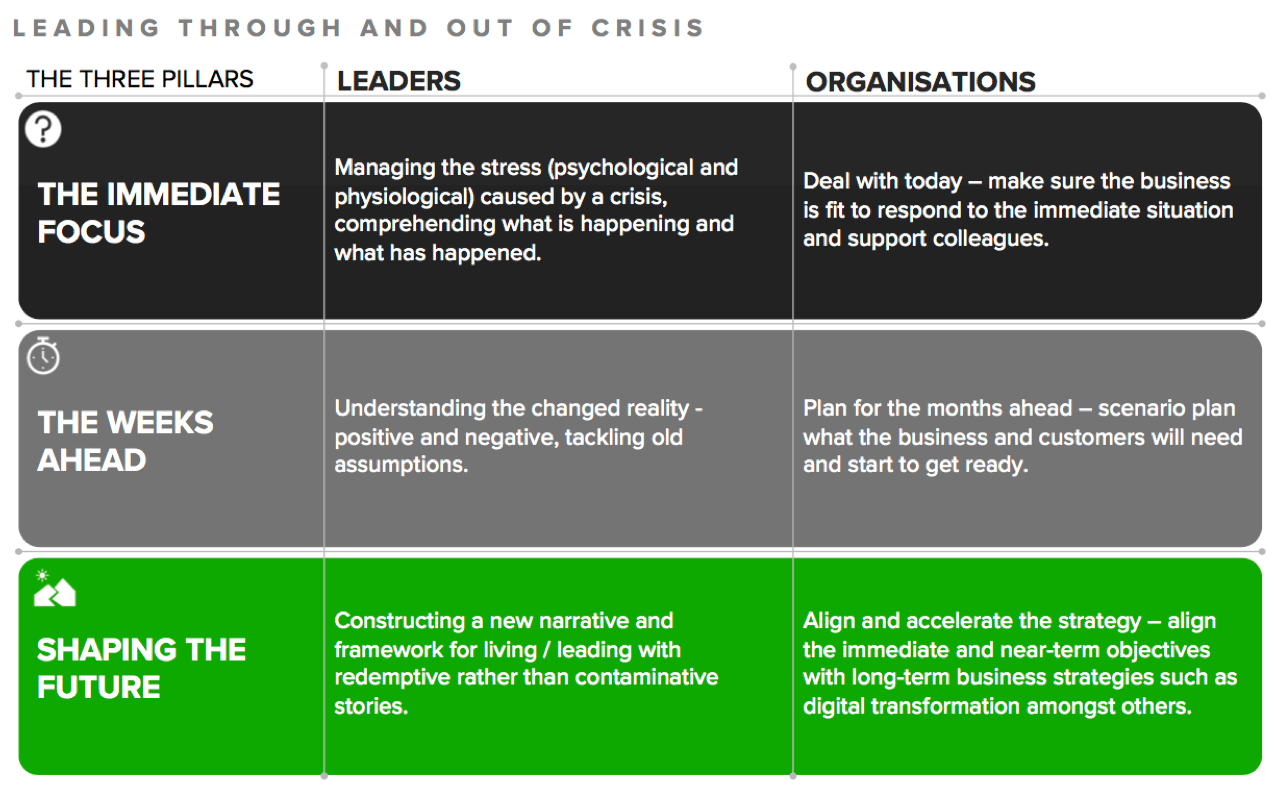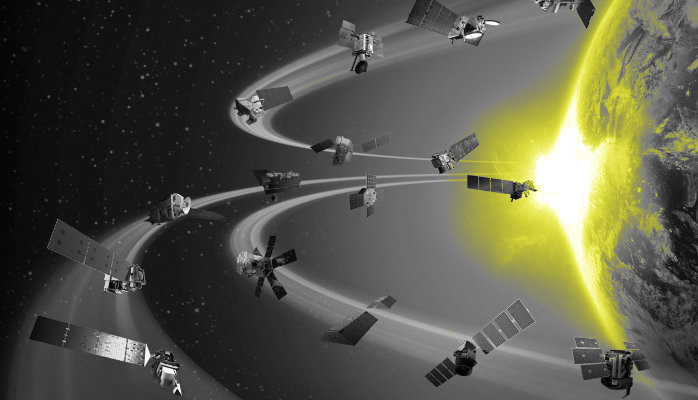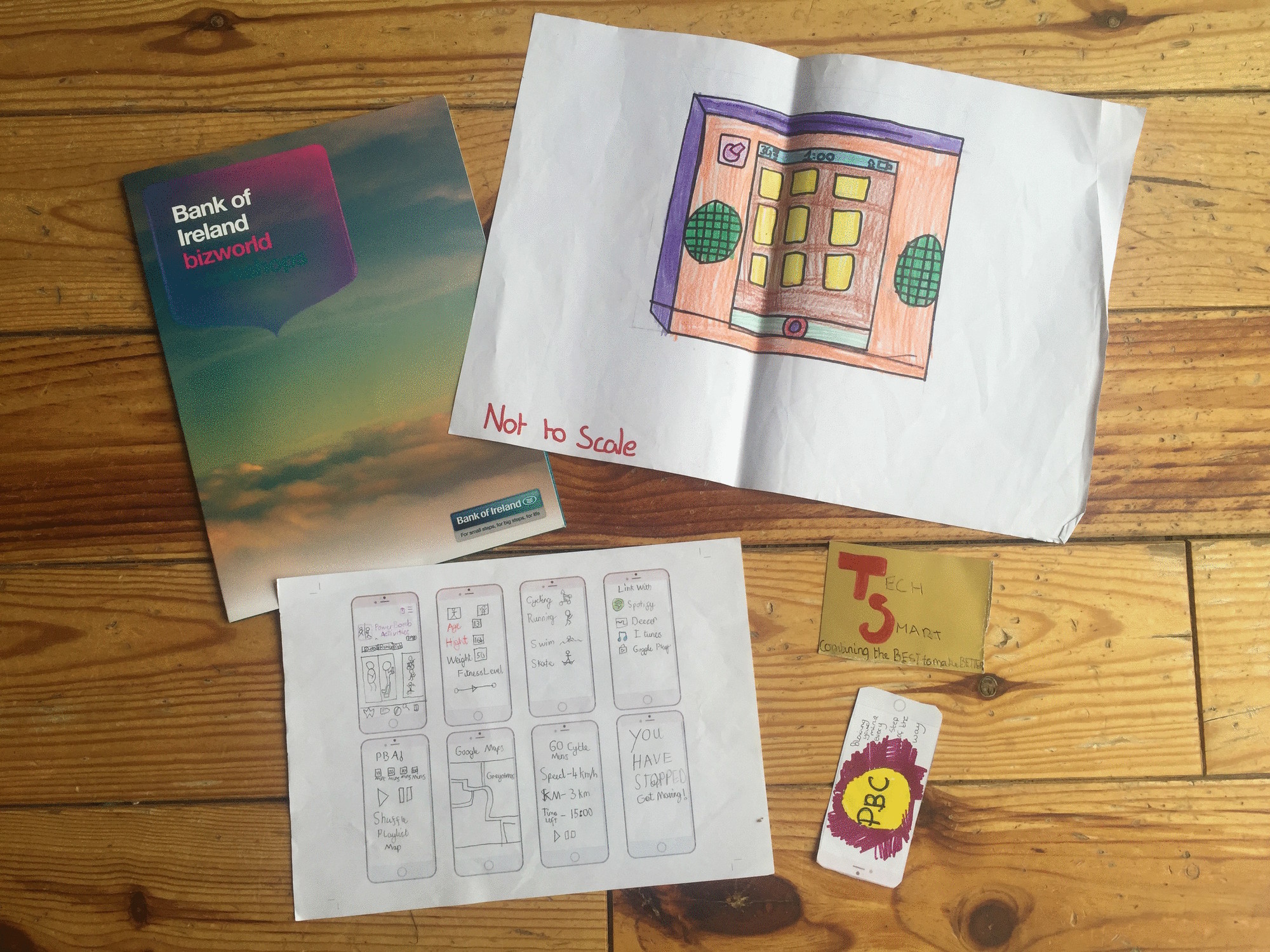How leaders and organisations respond, and the steps they take, will shape how they survive and more importantly emerge from the Covid-19 crisis to thrive into the future.
We are all too aware of the unprecedented impact that Covid-19 is having on our personal and professional lives. In a crisis even the most capable leaders can momentarily feel overwhelmed. There is comfort to be drawn in that it usually feels worse in the moment of experience than it does in hindsight. But it can also feel like a missed opportunity to have done something different. Crisis brings opportunity to flourish under fire.
- What if the challenges of crisis you face unleash the reservoirs of resources within you?
- What if the challenges of crisis are real opportunities to change and grow?
As organisations get to grips with their immediate business continuity planning, now is an opportunity for savvy leaders to reflect on the implications of the longer-term impacts that the Covid-19 crisis will have for our organisations. How leaders and organisations respond and the steps they take will shape how they survive and emerge from the crisis and then thrive into the future. Asking, what is happening now? What are my planning scenarios in the short term? How will both impact my strategy beyond survival? As we observe organisations and leadership responses to crisis, we see four types of organisational responses that often mirror human responses to trauma.

At a time of deep crisis, the idea of flourishing may seem unimaginable. But working with teams and organisations to create a new culture (The Flourishers) of people that can flourish under fire is essential to survive today and thrive tomorrow in the post- Covid-19 environment. Experiences tell us that not only is it possible to flourish under fire, but in our increasingly VUCA (Volatile, Uncertain, Complex, Ambiguous) world, it is essential that we develop the capability to do so.
Through Relational Coaching we often use the concept of stress-related growth (SRG) to enable clients to become the considered and conscious leaders that they need to be in order to lead their organisation through crisis. We have successfully used SRG to design and develop large-scale psychological transformation interventions for organisations seeking to survive and thrive in a world where old assumptions and frameworks are failing and becoming obsolete.

In this global pandemic, the immediate priority of leadership is to save lives. The second priority is to save the organisation and the livelihoods therein. There is also a third priority should you choose to acknowledge it – shape the post-crisis future. The starting point for this third and often overlooked priority is in the midst of crisis. Leaders who work at being present, even during the immediacy of crisis, not only personally flourish under fire but also lead colleagues and their organisations to thrive through and beyond crisis.
WORK ON BEING PRESENT … SHAPE THE POST-CRISIS FUTURE
This article was authored by Futurus101, a collaboration between Futurus, an Organisation Change Management and People Advisory practice and OneZero1, a Strategy and Transformation Advisory practice. We have come together to bring fresh thinking to leaders in a time of crisis. We are supporting our clients and enabling them to flourish under fire.
Talk to us, if you want to find out more








